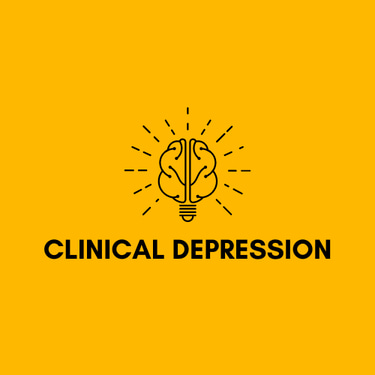For Questions: Text (833)233-0869
Virtual Treatment for Depression: A Comprehensive Guide


Depression is one of the most prevalent mental health disorders affecting millions of people globally. While the traditional approach to treatment often involves in-person therapy, the rise of telemedicine and digital health solutions has introduced a new way for individuals to access mental health care: virtual treatment for depression. This method provides convenience, flexibility, and a broader range of treatment options, making it easier for people to get the help they need.
In this article, we will delve into the benefits, effectiveness, and common methods used in virtual treatment for depression, and how it compares to traditional in-person care.
Understanding Depression: The Basics
Before exploring virtual treatment, it’s essential to understand depression itself. Depression is more than just sadness or feeling down; it's a persistent mental health disorder that affects how a person feels, thinks, and handles daily activities. According to the World Health Organization (WHO), depression is the leading cause of disability worldwide, with symptoms ranging from mild to severe.
Common Symptoms of Depression:
Persistent sadness or low mood
Loss of interest in activities once enjoyed
Fatigue and lack of energy
Sleep disturbances (either insomnia or oversleeping)
Appetite changes (weight gain or loss)
Feelings of worthlessness or guilt
Difficulty concentrating
Physical pain or ailments without a clear cause
Thoughts of death or suicide
If left untreated, depression can severely affect one's quality of life. Fortunately, advancements in technology have made it possible to access effective treatments without the need for in-person visits.
What is Virtual Treatment for Depression?
Virtual treatment for depression refers to accessing mental health care services remotely, using telecommunication tools such as video conferencing, phone calls, and even text-based services. These methods provide individuals with the same type of counseling and psychiatric care they would receive during face-to-face appointments, all from the comfort of their homes.
Virtual treatment can encompass different forms of therapy and treatment options, including:
Online Therapy (also called teletherapy)
Telepsychiatry
Mobile mental health apps
Online support groups
The appeal of virtual treatment for depression lies in its accessibility, particularly for individuals who may find it challenging to attend in-person sessions due to geographic location, physical limitations, or other barriers.
The Benefits of Virtual Treatment for Depression
Virtual treatment for depression offers several advantages, making it a popular choice for many individuals seeking mental health care. Some key benefits include:
1. Convenience and Accessibility
For those living in rural or remote areas where mental health services are scarce, virtual treatment provides access to licensed therapists and psychiatrists. Additionally, individuals with mobility issues, busy schedules, or those who feel uncomfortable in traditional therapy settings can find virtual treatment far more accessible.
2. Anonymity and Privacy
Some individuals hesitate to seek mental health care due to stigma or fear of judgment. Virtual treatment offers a degree of anonymity, allowing people to receive care in a more private, secure environment. Many online platforms prioritize confidentiality, ensuring that personal information remains protected.
3. Reduced Costs
In-person therapy can be expensive, particularly for those without insurance coverage. Virtual therapy platforms often offer more affordable treatment options and flexible pricing structures. Some services also provide free resources, support groups, or sliding scale fees based on income.
4. Flexibility in Scheduling
Virtual treatment platforms offer greater scheduling flexibility. Since sessions can be conducted online, individuals can fit therapy into their busy lives, often with more options for evening or weekend appointments.
5. Consistent Care
The ability to access treatment remotely means that individuals don’t have to skip sessions due to travel, relocation, or other life disruptions. Consistency in care is crucial for treating depression, and virtual therapy ensures that patients can maintain their treatment plans even during times of transition.
Types of Virtual Treatment for Depression
Several virtual treatment methods cater to individuals experiencing depression. Each option has unique benefits, and the right choice depends on the individual's needs, preferences, and the severity of their depression.
1. Online Therapy (Teletherapy)
Online therapy is one of the most common virtual treatments for depression. It involves video or phone-based sessions with licensed mental health professionals. Platforms such as BetterHelp, Talkspace, and 7 Cups allow individuals to connect with therapists specializing in depression treatment. These platforms offer various communication modes, including video calls, phone calls, text messaging, and even email correspondence.
Online therapy is particularly beneficial for those who require talk therapy (such as cognitive-behavioral therapy or CBT) but prefer not to visit a therapist's office. Research shows that teletherapy is just as effective as in-person therapy for treating depression.
2. Telepsychiatry
Telepsychiatry focuses on medication management and the clinical diagnosis of mental health disorders. Individuals diagnosed with depression often require antidepressants or other forms of medication. With telepsychiatry, patients can consult with licensed psychiatrists, discuss their symptoms, and receive prescriptions for antidepressants, mood stabilizers, or other medications virtually.
Many healthcare providers, including platforms like Amwell and Teladoc, offer telepsychiatry services. These platforms can coordinate virtual follow-ups to adjust medication as needed.
3. Mobile Mental Health Apps
Several mental health apps offer self-guided tools to help individuals manage depression. Apps like Moodpath, Headspace, and Calm provide mindfulness exercises, meditation guides, journaling prompts, and mood tracking to support mental health.
Though these apps aren’t a replacement for therapy, they can complement other treatment forms and provide on-the-go tools for managing symptoms of depression.
4. Online Support Groups
Support groups play a crucial role in mental health treatment. Virtual platforms like 7 Cups, SMART Recovery, and Mental Health America offer online forums, peer-led groups, and live chats where individuals experiencing depression can connect with others who understand their struggles.
Group support, whether peer-based or facilitated by professionals, provides a sense of community and helps reduce feelings of isolation common in depression.
Is Virtual Treatment for Depression Effective?
Studies indicate that virtual treatment for depression can be as effective as traditional in-person methods. In fact, a 2020 meta-analysis published in JAMA Psychiatry found that teletherapy, particularly for cognitive-behavioral therapy (CBT), produced comparable results to in-person sessions. Additionally, the accessibility of virtual treatment has the potential to increase engagement and adherence, which can improve treatment outcomes.
However, the success of virtual treatment largely depends on several factors:
The severity of the depression: For mild to moderate depression, virtual treatment is typically effective. However, individuals with severe depression, particularly those at risk of self-harm or suicide, may require more intensive in-person care.
Commitment to the process: Just like in-person therapy, virtual treatment requires individuals to actively engage in sessions, follow treatment plans, and communicate openly with their therapists or psychiatrists.
The quality of the provider: Not all online therapy platforms are created equal. It's crucial to choose services with licensed professionals and ensure that therapists or psychiatrists are experienced in treating depression.
How to Choose the Right Virtual Treatment for Depression
Choosing the right virtual treatment for depression can feel overwhelming due to the sheer number of options available. Consider the following tips when selecting a provider or platform:
Evaluate Your Needs: Determine if you need therapy, medication management, or a combination of both. If you're unsure, many platforms offer initial consultations to help assess your needs.
Research Platforms: Look for platforms that have licensed professionals, transparent pricing, and positive reviews. Ensure that the platform follows strict privacy and confidentiality guidelines.
Check Insurance Coverage: Some online therapy platforms are covered by insurance, while others are not. If cost is a concern, verify whether your health insurance provider covers virtual mental health services.
Look for Specialized Care: Depression affects individuals differently. Seek out therapists or psychiatrists who specialize in treating depression and match your preferred therapeutic approach, whether it's CBT, interpersonal therapy, or another method.
Conclusion: The Future of Mental Health Care
Virtual treatment for depression is transforming the way individuals access mental health care. By removing many of the traditional barriers to treatment—such as geographic distance, cost, and scheduling conflicts—it opens the door for more people to receive the help they need. With growing evidence supporting the effectiveness of virtual treatment, it’s clear that telehealth will continue to play a vital role in the future of mental health care.
If you or someone you know is struggling with depression, consider exploring virtual treatment options. From online therapy to telepsychiatry and mental health apps, help is just a click away.
©2025
Clinical Depression
For Questions: Text
(833) 233-0869
